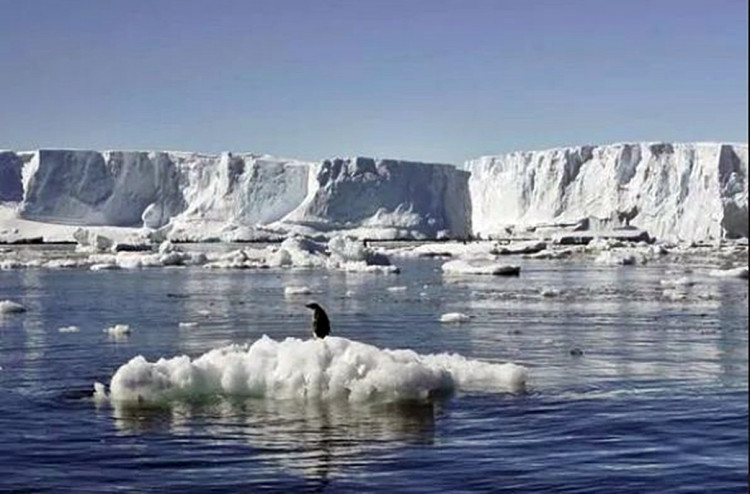Antarctica's already dangerous ice melt has accelerated by an intolerable 280% over the last four decades, setting the stage for catastrophic sea-level rise and related problems in the future.
Two new published studies send the same ominous message -- our planet's ice is melting at a frightening rate. Among the deadliest harmful effects of this dangerous development: higher sea-level rise.
Ice loss in Antarctica increased from 40 gigatons (or one billion tons) per year from 1979 to 1990 all the way up to 252 gigatons per year from 2009 to 2017, which is a six-fold increase. One study led by the University of California (UC) also found the melt-rate has accelerated in the most recent decades. The melt rate hit 280% in the second half of the nearly 40 years compared to the first half.
Antarctica's crucial ice sheet has been melting for the entire 39 year period, but this is just the tip of the iceberg, so to speak, said Eric Rignot, who led the UCV study.
"Antarctica is melting away," said Rignot, (and) "not just in a couple of places."
Antarctica holds most of the Earth's ice. If melted, the Antarctic ice will cause the average sea level to rise 57.2 meters or 188 feet.
Another alarming finding in the study is that East Antarctica has seen a lot of melting over the same 39 year period. This challenges the traditional scientific view the East Antarctic ice sheet is relatively stable and resistant to change. The study also confirms the West Antarctic ice sheet accounts for most of the recent ice loss.
I did not expect the cumulative contribution of East Antarctica melt to be so large, said Rignot.
He noted the finding is significant because "melting is taking place in the most vulnerable parts of Antarctica ... parts that hold the potential for multiple meters of sea level rise in the coming century or two."
Another published study compared the geologic record of Antarctica's ice with the known astronomical motions of the planet and the wobbling of the Earth's tilt.
Researchers were able to re-create a broad history of the Antarctic ice sheet going back 34 million years to when the ice sheet first formed. They documented multiple cycles of ice growth and decay.
The study said that some 15 million years ago, when Earth's atmosphere was supercharged with carbon dioxide, oceans warmed and sea ice around Antarctica disappeared. This event caused a significant part of the Antarctic ice cap to melt and dramatically elevate global sea levels.
This study characterizes the growth and decay of the Antarctic ice sheet and sheds light on what is forcing it to change, explains Stephen Meyers of the University of Wisconsin-Madison, one of the study's co-authors along with Richard Levy of New Zealand's GNS Science and Victoria University of Wellington.
Levy and Meyers found that sea ice, or the thin frozen layer of ocean water that surrounds Antarctica, plays a critical role in protecting the miles-deep ice on the continent from the warmer ocean that surrounds it. Sea ice creates a barrier between the ocean and the ice, said Levy.






